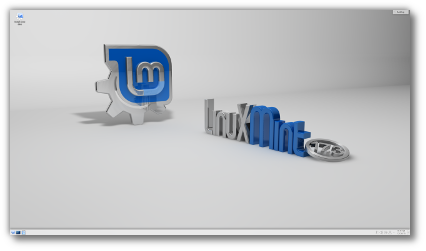
Posted on 02/04/2017 7:51:21 PM PST by upchuck
... massive leaks have revealed Microsoft is working on a brand new Windows platform and it is unlike anything we have seen before…
Dubbed ‘Windows Cloud’, the references to the mysterious operating system first broke last week via code references in a new beta for the upcoming Windows 10 Creators Update. Microsoft immediately told CNet "We have nothing to share", but now the floodgates have opened.
So what is Windows Cloud?
In a nutshell: a stripped down version of Windows 10 designed only to run Universal Windows Platform (UWP) apps - aka apps designed to run on both desktop and mobile devices. Any attempt to run standard desktop programs on Windows Cloud results in the warning message: “The app you’re trying to run isn’t designed for this version of Windows”.
(Excerpt) Read more at forbes.com ...
I’d had my webserver on linux for years, but I just went all desktop and laptop too for the last year.
Thee are still a couple things that are flakey on Linux, but not much and it keeps getting better. Plus a huge money saving from windows.
My time frame is decades, my niece will inherit my data and programming files. If you are looking for long term productivity, staying with Windows is betting on a dinosaur.
Yup.
That’s why we switched to XP when it became available.
I also had several computers come with Vista installed.
That was horrible.
So. Much. Junk. Installed.
To be fair to Microsoft, after XP they generally weren’t the ones who piled on all that junk - that was left to the computer manufacturer. Sadly, most major makers often took the opportunity to load up their new computers with crapware and sponsoredware.
I was referring to the “user friendly” features of Vista, like the weird docks with clocks, calendars and all that crap, cluttering the desktop and hogging memory.
I uninstalled every “feature” I could but Vista was still awful.
Considering that Microsoft later admitted that certain aspects of Vista were *deliberately* designed to annoy the user...
As for the widgets, sidebars and such - those were tacked on to approximate features that had cropped up in Mac OS X and the most advanced Linux user environments since XP had come out. In typical MS style they weren’t very good or well thought out.

That’s an understatement.
:D
snow leopard forever ...
I really like Win7, it's fairly stable, as Windows goes. But I've needed to get a Windows 10 laptop at work, as my company is migrating from Zimbra (linux based Email) to Office 365 (Exchange Online,) and Windows 7 simply can't be used for much of the administrative work. Even though you can load PowerShell 4 on Windows 7, the underlying architecture won't allow the plug-ins to work properly. And even some of the administrative web sites won't run on Win7 (for instance, the security and compliance admin site in Office 365.)
Mark
Well, there goes my entire software library, games included.
What crap.
“I did read a comment recently from a Win10 expert who admitted Win10 was primarily designed for tablets and touchscreens and not ‘real’ computing.”
Whoever wrote the comment you read is woefully incorrect.
I work in pro audio. While I prefer OS X I have worked on projects using Windows 10 & it works just fine. Studio’s all over the world use Windows 10.
Nope. You did.
 |
 |
|---|
Thanks to upchuck for the ping!
That's pretty much my take on it too.
Same here. XP was awful to support.
That explains the problems (outside of an old cheap W7 laptop that's dying) that Grandma's having with her Exchange email setup.
I guess the most economical fallback is to go get another cheap laptop with W10 and use it strictly for Exchange (which she usually monitors and does most of her responses using her iPad anyway) while I'm working out the wrinkles on the conversion of the Big Mutha Desktop to Unix with everybody else in VM.
...aggravating bunch of geeks....
Compared to other versions of windows maybe. Compared to other OSes? Not so much. It never had a decent batch language for one thing. People forget how horribly bad, unstable and flakey XP was when it came out. It was pretty much unusable IMO until SP2. Even when it finally got stable, it, along with the entire Microsoft Office suite was a virus magnet.
Compared to just about any version of Linux today, it's hopelessly primitive. Even Microsoft's most recent versions are still far behind a modern Linux package management system. The method used to do updates is, frankly insane. Try bringing up a fresh install of Win 7 and see how long it takes, and how many reboots you have to endure to get it up to date on all the patches. I can't really speak to Win 8 or 10 on that, but expect it's little different.

Good Hunting... from Varmint Al
Yup. Exchange 2016 or Exchange Online (as well as O365) requires Windows 8.1 (or Server 2012) or later to do most of the administration. I really got pissed off when I realized that the administrative WEB SITE for Office365 had some problems with browsers running on Win7. It was such a pain for me to have to RDP into a server any time I needed to run a quick PowerShell command, especially if others were already connected to the server.
And having to learn Powershell (after years of working with sh/ksh/bash is going to take some time...)
Mark
I remember that well. I recall laughing at people who'd in the past claimed much greater uptime than that, because they'd proven themselves to be absolute liars, because the uptimes they were reporting was impossible given the buffer overflow bug. As a Unix guy, I was used to systems that essentially ran from one power outage to the next, that being the only thing that forced a reboot. I can tell you that on my desktop, it has been about 21 days since our last power outage here. It lasted too long for my UPS to ride through. However, I have a little Unix box that I use as a media server that has been running continuously for 118 days since I installed one of those USB batteries between it and the wall. Since the system will run on 5v, it can run for about 24 hours without external power. For a system like that, that doesn't actually reach out to the internet for anything (though it does have local networking enabled), updates are not really even needed. I figure I'll let it run until either it, or the battery dies, or I decide to load a new OS on it.
Win 7 and later at least managed 497 days uptime before they overflowed.
While that is better, it's hard to believe they still have the issue. Of course, a Windows system that is being regularly patched will rarely achieve more than 30 days of uptime, as so many patches seem to require reboots, because of Microsoft's primitive update mechanisms.
Disclaimer: Opinions posted on Free Republic are those of the individual posters and do not necessarily represent the opinion of Free Republic or its management. All materials posted herein are protected by copyright law and the exemption for fair use of copyrighted works.